How to Get Rid of Red Dots on Skin
What causes brown spots on your skin? A look at the brown spots on skin with focus on the causes, pictures, on chest, legs, hands, in children, raised, itchy and how to get rid of them.
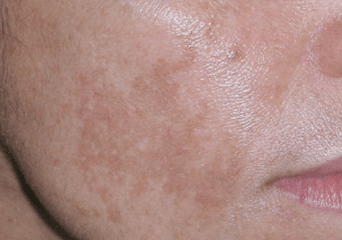
brown spots on skin
Brown Spots on Skin Causes
Age spots are the flat, brown, or black spots that are found on the skin. They normally occur on the sun-exposed areas of the skin. Age spots are also known as the liver spots, solar lentigines, or even sun spots.
When skin is much exposed to the sun, it leads to an increase in the production of cells called melanocytes that increase the melanin in the skin, therefore turning the skin darker. The dark skin patches are called brown spots, age spots, sun spots or also liver spots.
Brown spots normally appear on the exposed skin areas such as the face, back, chest, shoulders and also the hands. Some of the main causes of the brown spots are sun exposure, aging, as well as the genetics. Factors like stress, vitamin deficiencies, and weak liver functioning can also contribute to this problem.
If you have an age spot, it will probably fall into one of the three categories:
- Cherry hemangiomas. Small brown dots that are smaller than an eraser, these are brought about by an overgrowth of the blood vessels in the skin. They are very common and may also appear anywhere, but they are in any way not linked to skin cancer.
- Lentigines. These are the flat, tan-to-dark spots that appears similar to the freckles. They normally range from the size of a pencil eraser to the size of a dime, but they may be bigger or even smaller. These are what many people normally think of as age spots or brown spots. They are located on the sun-exposed areas of the skin.
- Seborrheic keratoses. These might be flat or even the raised and normally range from the pale to dark brown or black. They are normally scaly or even wart-like, although they are not warts. People who have most of these skin changes have seen them before on a first-degree relative. They are also linked to the skin tags, another kind of benign skin growth.
Melanoma in its early stages may look like lentigines or seborrheic keratoses. If a melanoma arises in a pre-existing mole, it is normally raised and smooth. If it arises on the normal skin, it starts as a flat brown to the black growth, then grows out or down.
If a bump grows on a mole or even in a previously flat, discolored spot, see the dermatologist right away to get checked for any possible skin cancer.
Brown Spots on Skin Pictures
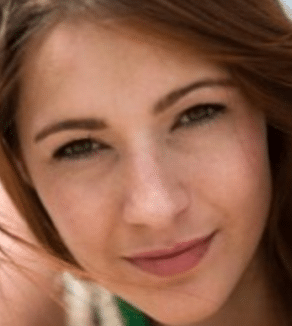
brown spots on face
Brown Spots on Skin in Children
Skin discoloration amongst the children is not life-threatening. It's because of a disruption of the pigmentation of the skin that can be a small patch or might cover a large portion of the child's body.
Childhood brown spots on skin are common and aren't normally a cause for concern. Most of the brown spots are harmless and disappear without the need for treatment.
However, see the child's pediatrician if the child has a rash and seems unwell, or if you're worried. They'll be able to find out the cause and recommend the necessary treatment.
Some of the reasons for the child to develop brown spots on skin are;
Eczema
This is a long-term condition that leads to the skin to become itchy, brown, dry and cracked. The most common type is atopic eczema that mainly affects children but might continue into adulthood.
Atopic eczema normally develops behind the knees or on the elbows, eyes and ears. It isn't a serious condition, but if the child becomes infected with the herpes simplex virus, it can lead to the eczema to flare up into an outbreak of tiny brown spots on skin known as eczema herpeticum, and will cause a fever.
About one in every five children in the UK experiences eczema, and in 8 out 10 cases it develops before the age of 5, normally before a child's first birthday.
Erythema multiforme
Erythema multiforme is the brown spots that are found on skin (usually mild) that's brought about by an allergic reaction to the herpes simplex virus.
The spots appears like targets, having a dark red center and paler ring around the outside. The hands or feet also tend to be affected first, which is then followed by the limbs, upper body and face.
The child will probably feel much unwell and can have a fever, which you should be able to treat using over-the-counter medicine. It can take from three to six weeks before they feel better. See the doctor if the child experiences a rash and seems unwell.
In the very rare cases, erythema multiforme might be triggered by a reaction to some medications, such as an antibiotic or even anticonvulsant. This more severe form is known as Stevens-Johnson syndrome and it may be life-threatening.
Keratosis pilaris
Keratosis pilaris is a very common and much harmless skin condition. The skin on the back of the upper arms becomes very rough and bumpy, as if it is covered in permanent goose pimples. Sometimes, the buttocks, forearms and also the upper back can also be affected.
Keratosis pilaris normally begins in childhood and gets worse during puberty. Some of the people find that improves after this and may even disappear in adulthood.
There's no given cure for the keratosis pilaris, and it normally gets better on its own without treatment. But, there are some other measures that you can take that can improve the child's skin, such as using of non-soap cleansers rather than soap to moisturize their skin. The doctor or pharmacist will be able to recommend a suitable cream.
Measles
Measles is a highly infectious illness that commonly affects the young children. It's now rare in the some countries due to the effectiveness of the measles, and rubella vaccine.
The measles rash is red-brown spots on skin. It normally starts on the head or even the upper neck and then spreads outwards to the rest of the body. The child may also have a fever and cold-like symptoms.
Call the doctor immediately if you think the child has measles. It's better to phone before visiting as the surgery may require to make arrangements so as to reduce the risk of spreading the infection to others.
Measles normally passes in about 8 to 10 days without causing further problems. Paracetamol can be used to relieve fever and pains (don't give aspirin to children below the age 16). Also, make sure the child drinks plenty of water so as to avoid dehydration.
Molluscum contagiosum
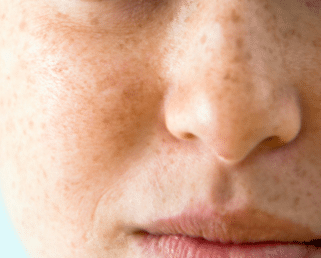
brown dots on face
Molluscum contagiosum is a viral skin infection that leads to clusters of small, firm, raised spots to develop on the skin.
It commonly affects young children aged one to five years, who tend to catch it after close physical contact with another infected child.
The condition is normally painless, although some of the children can experience itchiness. It normally disappears within 18 months without the need for treatment.
Molluscum contagiosum is very infectious. But, most adults unlike children are resistant to the virus, which implies they're unlikely to catch it if they come into contact with it.
Psoriasis
Psoriasis is a long-lasting skin condition that leads to brown, crusty patches of skin covered with silvery scales.
The severity of the psoriasis varies greatly from a person to another. For some other people, it's just a minor irritation, but for other people it can have a major impact on their quality of life.
There's no indicated cure for psoriasis, but there are a number of treatments that can assist to improve the symptoms and also the appearance of the skin patches. For instance, topical corticosteroids are creams and also the ointments that can be used to the skin.
Brown Spots on Chest
Tan colored spots are a collection of melanin pigment, known as freckles. They normally occur in sun exposed areas. They occur commonly in summer and usually disappear by winter. Although you do not go out into sun much, they can occur without any relation to sun exposure, if you are genetically predisposed.
In such case they may not disappear. But normally apart from the cosmetic issues, there is nothing to worry about them health wise. You might get them removed if required using the help of laser treatment etc. But if you find any increase in size of the spots, or an abnormal change in its color or texture of skin
Brown Spots on Legs

brown spots on legs
This is a common problem in both men and women. Over time, the occasional brown spots on skin can slowly turn into an accumulation of these which may be unsightly.
Brown spots are normally brought about by the sun damage over many years. It might be just a couple of bad burns or even it could be just years of golfing in shorts without too much sunscreen. These are hard to clear up but it may be done using gentle lasers and consistently avoiding of the sun on the area and use of high zinc sunscreens.
The other most common cause is leaky capillaries in the lower leg. Capillaries (the tiny blood vessels that feed the skin) may get irritated and then the red blood cells can leak out. The red blood cells get reabsorbed by the body, but the iron in the cells do not. This causes a type of iron tattoo.
There are many causes for the iron in skin problem, so see the doctor. Sometimes something as simple as aspirin or even a course of ibuprofen might thin the blood enough that there will be a leakage. Sometimes the underlying veins are a big problem, and there are other causes that are internal.
Brown Spots on Hands
There are many causes for the brown spots on the hands, not all of which have to do with a vitamin deficiency. Brown spots can be because of a lack of vitamin C or B12, weak liver function or even cumulative sun damage.
It's vital to investigate each of the potential cause; the doctor can help. If the brown spots are caused by a lack of essential nutrients, add some vitamin supplement to the daily routine, and increase the amount of the fruits and veggies that you eat, prime natural sources for a host of all-important vitamins and also the minerals.
Raised Brown Spots on Skin
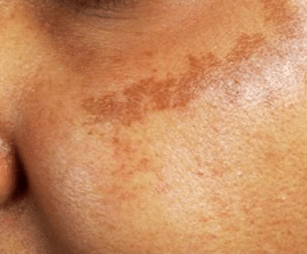
brown patches on face
Dermatofibromas are the small, red or brown spots on skin caused by an accumulation of fibroblasts (soft tissue cells below the skin). They often happen on the legs and can also itch. Dermatofibromas can be surgically removed if they become much painful or itchy.
Dermoid cyst is a benign tumor that is made up of hairs, and sebaceous glands. Some of the internal dermoid tumors can even have cartilage, and teeth. Dermoid cysts can also be removed surgically for cosmetic reasons.
How to Get Rid of Brown Spots on Skin – Home Remedies
Here are ways on how to remove black spots from face, skin, hands, body and legs:
- Lemon Juice
Lemon juice contains bleaching properties that can assist to get rid of brown spots. Plus, it assists to maintain soft and beautiful skin.
- Simply use fresh lemon juice directly on the affected skin spot. Leave it on for about45 minutes before rinsing it off using cold water. Repeat the remedy at least twice daily for about three months to notice positive results. If you have very sensitive skin, dilute the lemon juice with water, rose water or even honey.
- Another option is to mix sugar in the lemon juice to make a paste and use it as a scrub on the face, especially on the brown spots. Finally, rinse it off after 10 minutes. Do the process a few times a week. You can also add some olive oil in the recipe.
- Buttermilk
Buttermilk has lactic acid that helps exfoliate the skin to remove blemishes and brown spots on skin without drying out the skin.
- Use buttermilk on the brown spots on skin using a cotton ball. Leave it on for 5 minutes before washing the area using cold water. If you have oily skin or even acne, you can also add some lemon juice to the buttermilk.
- Another option is to mix five teaspoons of buttermilk and about three teaspoons of tomato juice together and then use the mixture on the affected skin.
Repeat either of these remedies thrice daily until you are satisfied with the results.
- Castor Oil
Castor oil contains very strong healing properties and can be applied effectively to remove brown spots on skin or age spots. Along with castor oil, you can apply vitamin E oil, olive oil or almond oil to remove brown spots.
- Use a cotton ball to use castor oil on the affected area.
- Gently massage the affected area for a few minutes.
- Leave it on for a few hours and then wash it off.
- Do this process once in the morning and once at night to assist the brown spots fade and make the skin tone even.
- Apple Cider Vinegar
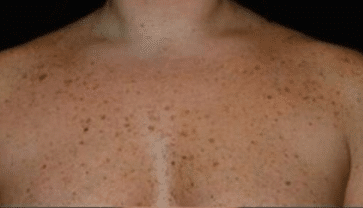
brown spots on chest
Apple cider vinegar is a very effective remedy for a number of skin problems which includes brown spots. It will assist to dry out and also fade the spots faster.
- Dilute apple cider vinegar with an equal amount of water. You might also add some honey. Apply the solution on the brown spots and wash it off after a few minutes. Do the process once daily for a few days or even until you get positive results. You can use straight apple cider vinegar also, but it can sting.
- Alternatively, mix about one-half teaspoon of apple cider vinegar in a few tablespoons of orange juice. Use it on the affected brown spots on skin and leave it on until it dries completely before washing it off. Repeat once or even twice daily for four to six weeks.
- Aloe Vera
Aloe vera contains healing properties and helps in skin regeneration. So, it is excellent for getting rid of brown spots on skin, especially when brought about by sun exposure.
- Gently rub fresh aloe vera gel on the spots. Leave it on for about 45 minutes before washing the area using cold water. Repeat the process twice daily and within a month you should notice improvement.
- If fresh aloe vera gel is not found, you can opt for aloe vera juice that you can readily obtain from the market.
- Sandalwood
Sandalwood is an anti-aging agent and also an antiseptic that can assists to reduce hyperpigmentation and remove brown spots.
- You may also make homemade pack using two tablespoons of sandalwood powder, two teaspoons of rose water, and about one teaspoon each of glycerin and also lemon juice. Apply the pack on the brown spots on skin and allow it to dry naturally. Use cold water so as to wash it off. Repeat the process a few times a week until your brown spots disappear.
- Another option is to add one tablespoon of the orange juice, one teaspoon of lemon juice and the contents of the two vitamin E capsules in two tablespoons of sandalwood powder. Mix it well and then apply it on your face. Leave it on for about half of an hour before washing it off using cold water. Do the process a few times a week until you see improvement.
- Also, massage the affected skin area with a few drops of sandalwood oil mixed in one tablespoon of the olive oil or even almond oil, daily before going to bed and then leave it on overnight.
- Horseradish
Horseradish is a fantastic herb that assists to get rid of the brown spots on skin and freckles and makes your skin spotless, thanks to its skin lightening properties.
- You can make horseradish paste and apply it directly to the skin. Leave it on for 15 to 20 minutes before washing it off. Use it a few times a week.
- Another option is to grate a four-inch piece of horseradish with mix it in one-quarter cup of apple cider vinegar and allow the mixture to sit for two weeks. After two weeks, strain the mixture. Use a cotton ball to apply it on the affected skin. Follow this remedy three times a day for at least one month.
- Papaya
Certain enzymes and alpha hydroxyl acids that are found in papaya can assist to exfoliate the skin and thus reduce age spots, acne and other skin problems. It will also give the skin a cleaner and also brighter look.
- Rub one tablespoon of fresh grated papaya on the brown spots.
- Leave it on for about 30 minutes before washing the area with lukewarm water.
- Repeat twice daily until the brown spots fade away.

How to Get Rid of Red Dots on Skin
Source: https://lightskincure.org/red-spots/brown-spots-on-skin-patches-chest-legs-hands-raised-get-rid/